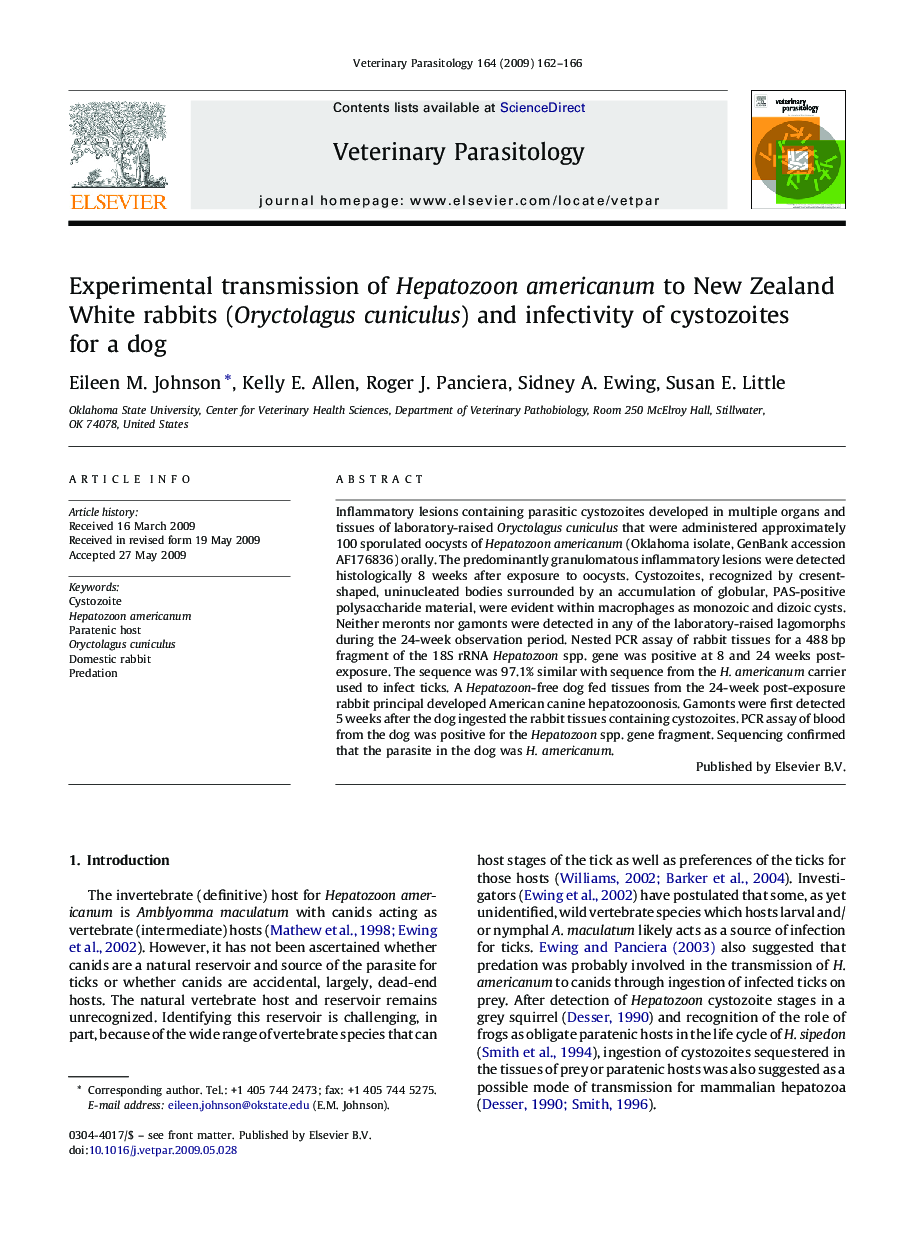| Article ID | Journal | Published Year | Pages | File Type |
|---|---|---|---|---|
| 2470935 | Veterinary Parasitology | 2009 | 5 Pages |
Inflammatory lesions containing parasitic cystozoites developed in multiple organs and tissues of laboratory-raised Oryctolagus cuniculus that were administered approximately 100 sporulated oocysts of Hepatozoon americanum (Oklahoma isolate, GenBank accession AF176836) orally. The predominantly granulomatous inflammatory lesions were detected histologically 8 weeks after exposure to oocysts. Cystozoites, recognized by cresent-shaped, uninucleated bodies surrounded by an accumulation of globular, PAS-positive polysaccharide material, were evident within macrophages as monozoic and dizoic cysts. Neither meronts nor gamonts were detected in any of the laboratory-raised lagomorphs during the 24-week observation period. Nested PCR assay of rabbit tissues for a 488 bp fragment of the 18S rRNA Hepatozoon spp. gene was positive at 8 and 24 weeks post-exposure. The sequence was 97.1% similar with sequence from the H. americanum carrier used to infect ticks. A Hepatozoon-free dog fed tissues from the 24-week post-exposure rabbit principal developed American canine hepatozoonosis. Gamonts were first detected 5 weeks after the dog ingested the rabbit tissues containing cystozoites. PCR assay of blood from the dog was positive for the Hepatozoon spp. gene fragment. Sequencing confirmed that the parasite in the dog was H. americanum.
